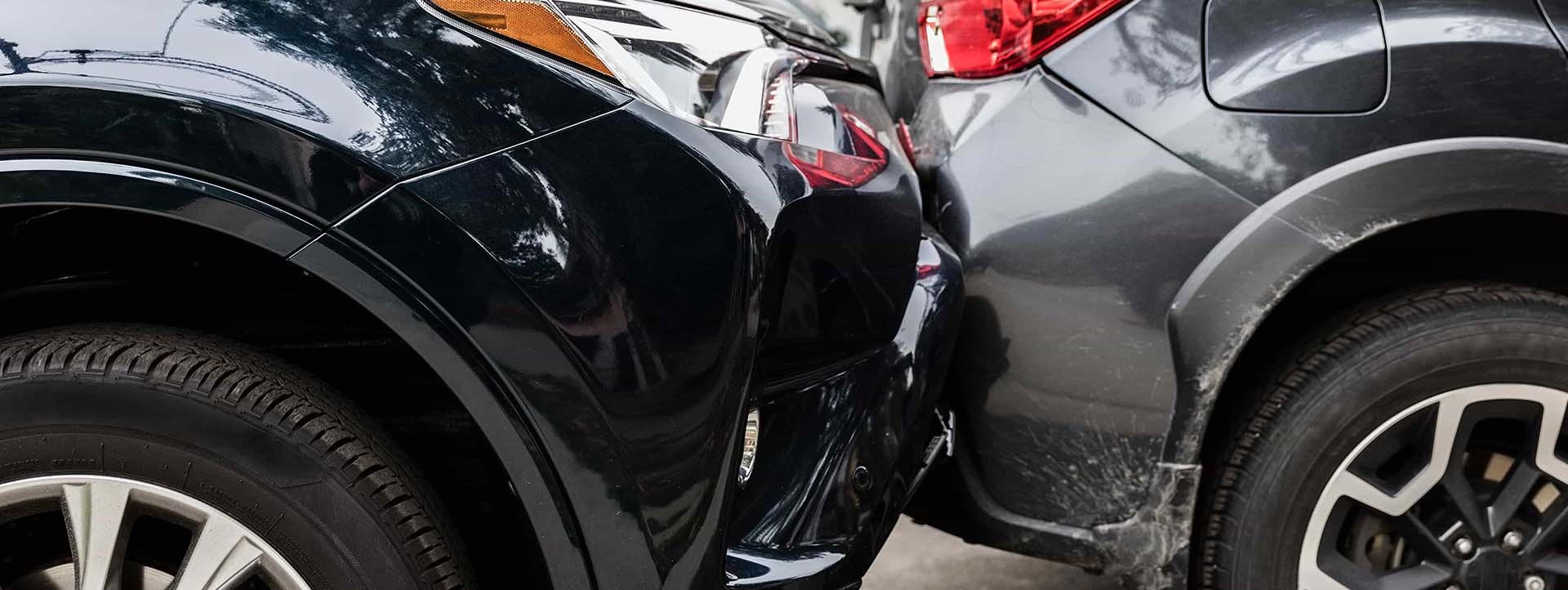Following the vehicle in front too closely reduces your safety margin and is a key contributory factor in ‘Hit Third Party in Rear’ road traffic incidents.
Most drivers will have been ‘tailgated’ at some point, by a vehicle behind them driving extremely close. It can be frightening and annoying, in fact surveys have found that tailgating is the number one annoyance that drivers have about other road users.
Tailgating is extremely dangerous. It can escalate into road rage and cause collisions. When being tailgated, it’s not uncommon for the driver in front to hit the brakes to teach the tailgater a lesson by giving them a ‘brake check’. This only increases the risk of a rear end shunt.
Stopping distance
As a driver, you generally have little control over the space other vehicles leave behind you. But you can control the gap you leave in front. Drivers need to be able to judge what is a safe stopping distance at all times and with due consideration of the traffic, weather and road conditions.
If in doubt, remember the old saying, ‘Only a fool breaks the two second rule’. As the vehicle in front of you passes a fixed point, such as a road sign, start to say ‘only a fool breaks the two second rule’ at your normal speaking rate. It should take about two seconds to say the phrase, so if you’ve passed the same fixed point before you’ve finished saying it, you’re too close and should leave more room. If the road is wet or icy leave a much bigger gap.
Driver errors, including driving too close are magnified by inappropriate speed, because drivers have less time to recognise and react to hazards developing around them. Quite simply, it reduces the driver’s safety margin which inevitably sees many would-be near misses turn into crashes. From an insurance claim defensibility perspective, in most cases it would be difficult to defend the claim and the driver behind would normally be deemed at-fault.
If you find yourself being tailgated, you should gently ease off the accelerator and try to increase the space in front of you. This increases your safety margin and reduces your risk of having to brake if you’re too close to the vehicle in front. If the worst happens and someone hits you from behind, at least you may have prevented a multiple pile up by not in turn hitting the vehicle in front. This will also make the insurance situation a little less complex.
Personality traits
Research into human factors in driving has suggested that certain personality traits can affect ‘driving style’, which in turn can increase crash risk.
‘Sensation Seeking’ is directly correlated with hazardous driving behaviours such as high speed and infringement of safety distance. Whether it’s for the adrenaline rush, due to aggression, or a way of coping with work pressure or boredom, the more that a thrill seeker pushes the limits of their vehicle or road conditions, the greater the risk of a crash.
If you recognise that you are this type of person or if you have employees like this working for you and driving your company vehicles, then you should realise that there’s an increased risk of having a road traffic incident. Driver performance monitoring and driver training can help to adapt driving styles, keep the roads safer, and reduce insurance claims.
Risk management services for QBE customers
QBE helps businesses build resilience through risk management and insurance.
QBE customers can access self-assessment questionnaires and a library of risk management material, along with a panel of approved partners who offer training, e-learning and other services at specially reduced rates. You can find more information in our Motor risk management service offerings brochure, and find out more about how QBE helps businesses to manage risk here.
Need to claim? Report it early
Finally, a reminder that if you have an incident and need to make an insurance claim, it’s important that you report it as soon as possible, ideally the same day. Reporting a claim early can save time and help you to receive any claim payments faster, as well as allowing us to help mitigate the cost of third-party claims.


